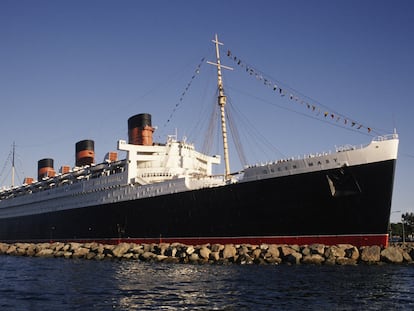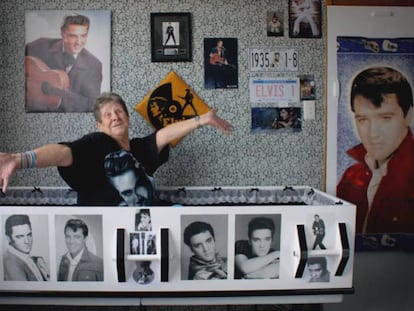Blue eyes, foreign words: The legacy of a Spanish vessel shipwrecked in Polynesia in the 1500s?
A new historical essay reconstructs the potential impact on the South Pacific Ocean archipelago of an expedition that sailed to establish a trade route ahead of the official discovery of the region by Europeans
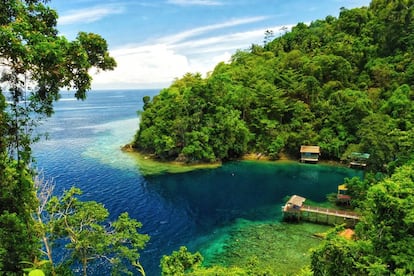

It all started in 1929 on the very distant Amanu atoll, part of the Tuamotu archipelago in what is now French Polynesia. Captain François Hervé had the mission of mapping all the islets, islands and reefs that dotted that part of the South Pacific, since only a few nautical charts from the 18th century had been preserved. So he took a motor schooner and, accompanied by an island chief, set out on his cartographic journey. The Polynesian and the Frenchman spent hours chatting until the island chief told him, to his surprise, that “eight generations ago, a white ship had been shipwrecked and its entire crew had been devoured.”
At the northwest end of the island, among the corals, four cannons once used by the sailors were still visible. Both men went to the site, and along with the stranded naval weapons from the 16th century, they also noticed a pile of stones that were not typical of the Tuamotu archipelago. Hervé brought one of the heavy cannons aboard his little boat, along with some of those round stones.
The Frenchman had come across the remains of one of the most mysterious voyages in the history of exploration, now reconstructed by the writer and historian Luis Gorrochategui in the essay La carabela San Lesmes. El viaje más épico de la historia (or The Caravel San Lesmes. The Most Epic Voyage in History), which recounts the sinking of the San Lesmes in Polynesia and how, 200 years later, Spanish, English, French and Dutch sailors arriving in the area were astonished to discover that many locals had a “typically European” appearance. Some were blond, red-haired and blue-eyed, and used words reminiscent of Spanish.
In July 1525, the neighborhood of Pescadería, next to the port of A Coruña in Spain’s northwestern Galicia region, was preparing to launch a fleet made up of four ships, two caravels and a patache. Its mission was to reach the distant and dangerous Moluccas in modern-day Indonesia and establish a spice trade – then in Portuguese hands – with Spain. At the head of the ships, Emperor Charles V placed the best sailors available to the Crown. The Santa María de la Victoria (360 tons) would be captained by the nobleman García Jofré de Loaísa; the Sancti Espiritus, by Juan Sebastián Elcano, famous for having completed the first voyage around the world three years earlier; the Annunciada, by Pedro de Vera; the San Gabriel, by Rodrigo de Acuña; the Santa María del Peral, by Manrique de Nájera, and the San Lesmes by Francisco de Hoces. The patache, the smallest of the ships, would be directed by Elcano’s brother-in-law, Santiago de Guevara. Everything was calculated down to the smallest detail – everything except the strength of the treacherous currents and storms that led the 60 sailors of the San Lesmes to lose the trail of their fellow adventurers in the middle of the immense ocean.
The ship finally ran aground on the northwestern tip of the Amanu atoll, and although the damage was not very serious, they had to jettison the heavy cannons (weighing over two tons) and the ballast stones while waiting for the tide to rise. “Halfway between Chile and the Moluccas, just as far from Australia as from Peru, from New Zealand as from Mexico, rarely, if ever, had a ship found itself so alone on the planet: it was the only one for many thousands of kilometers around,” writes Gorrochategui. So where did it go?
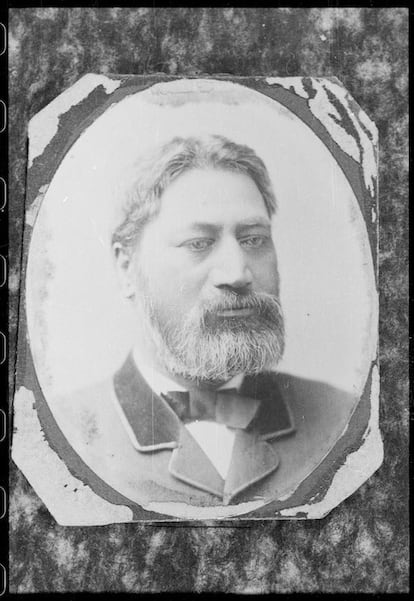
In 1968, the Australian researcher Robert Langdon wrote the article Did Europeans Inhabit the East Pacific in the 16th Century?, where he first hypothesized that the crew of the San Lesmes survived and procreated on one or more of the thousands of Pacific islands. Only archeology and genetics could reveal which ones. “We might think that, even if the crew of the San Lesmes had had offspring, the genes from Europe would have been diluted in the great genetic pool of Polynesia. However, this would not be the case due to several factors. One of them, the small population that these islands had, and another directly related to Mendel’s laws. If the grandchildren reproduce among themselves, we can find great-grandchildren with European features,” explains the Spanish writer.
In 1769, the English sailor James Cook reached Tahiti. He discovered that the local population had markedly different skin tones: the dominant race “was tall and white,” as much as the English themselves, and “some women were, in fact, practically like Europeans,” Cook wrote. In 1772, a Spanish mission headed by Domingo de Bonechea and Andonaegui also reached the Tuamotu archipelago, the same one where the trail of the San Lesmes is lost. Father Amich, one of the members of the expedition, left a note that “on two occasions two very white natives came aboard the frigate, with blond hair, blond beards and eyebrows, and blue eyes: the cacique from Tallarabu, where the frigate was docked, was very white and very red, however, from being sunburned.” It had only been five years since Tahiti had been officially discovered by Europeans, so these people could not be descendants of the last arrivals.

In his essay, Gorrochategui unravels the numerous Pacific islands through which European genetics spread over generations and the archaeological traces left by the Spaniards of the 16th century, such as a black granite bowl found in 1788, venerated and hidden by the locals, which was sent to Madrid and exhibited at the National Archaeological Museum. The Polynesians were not familiar with iron, and without metal tools, it is literally impossible to work with granite, as has been demonstrated by various scientific studies. The Australian archaeologist Bolton Corney wrote in 1912: “One is tempted to suppose that parts of the smithy or brass from some unknown ship may have arrived at a remote date and been adapted as chisels: it is possible that the natives came to be in possession of steel knives or chisels that were already forged.” In short, his hypothesis suggests that when the tools found on the San Lesmes ended up broken or dented, the Polynesians stopped making these types of containers.
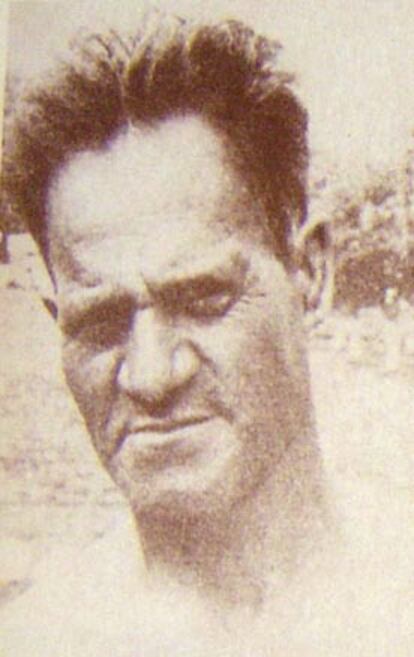
Gorrochategui also reviews other artifacts, such as a Spanish helmet found in New Zealand; places to store cereal that resemble hórreos, traditional grain silos from Spain’s northern regions of Galicia and Asturias; and several Maori words that resemble Spanish or Galician: “Pero” for dog (”perro” in Spanish), “kaipuke” for ship (”buque” in Spanish) and “pataka” for potato (”patata” in Spanish and “pataca” in the regional Galician spoken in northwestern Spain, where the expedition departed from).
Gorrochategui says that much remains to be studied about the enigmatic journey. When, in 1972, a genetic investigation was carried out among the inhabitants of Easter Island (Chile), 3,400 kilometers from the Amanu atoll, two alleles (A29 and B12) were found “that tend to be inherited together and have only been found in Caucasian Europeans.” Robert Langdon traveled to Easter Island in 1977 and met an old woman who still remembered Pakomio Maori, who died between 1908 and 1909, and described him as strong-built, red-haired and blue-eyed. He had two wives and 40 grandchildren, often clearly European in appearance. “Among them was Nicolas Pakomio, one of the Easter Islanders in whom genes of European and, more specifically, Basque descent were found.”
Tu suscripción se está usando en otro dispositivo
¿Quieres añadir otro usuario a tu suscripción?
Si continúas leyendo en este dispositivo, no se podrá leer en el otro.
FlechaTu suscripción se está usando en otro dispositivo y solo puedes acceder a EL PAÍS desde un dispositivo a la vez.
Si quieres compartir tu cuenta, cambia tu suscripción a la modalidad Premium, así podrás añadir otro usuario. Cada uno accederá con su propia cuenta de email, lo que os permitirá personalizar vuestra experiencia en EL PAÍS.
¿Tienes una suscripción de empresa? Accede aquí para contratar más cuentas.
En el caso de no saber quién está usando tu cuenta, te recomendamos cambiar tu contraseña aquí.
Si decides continuar compartiendo tu cuenta, este mensaje se mostrará en tu dispositivo y en el de la otra persona que está usando tu cuenta de forma indefinida, afectando a tu experiencia de lectura. Puedes consultar aquí los términos y condiciones de la suscripción digital.
More information
Últimas noticias
Most viewed
- Oona Chaplin: ‘I told James Cameron that I was living in a treehouse and starting a permaculture project with a friend’
- Reinhard Genzel, Nobel laureate in physics: ‘One-minute videos will never give you the truth’
- Sinaloa Cartel war is taking its toll on Los Chapitos
- Why the price of coffee has skyrocketed: from Brazilian plantations to specialty coffee houses
- Silver prices are going crazy: This is what’s fueling the rally
